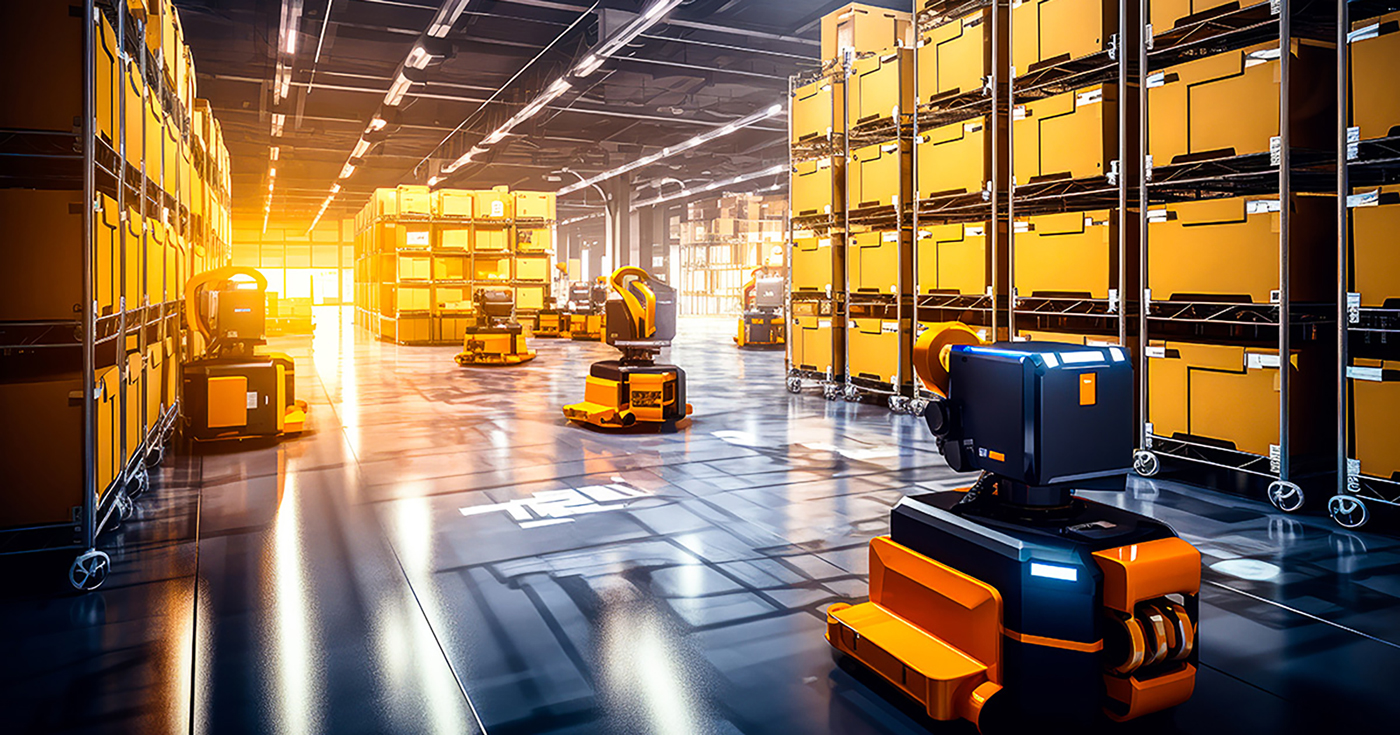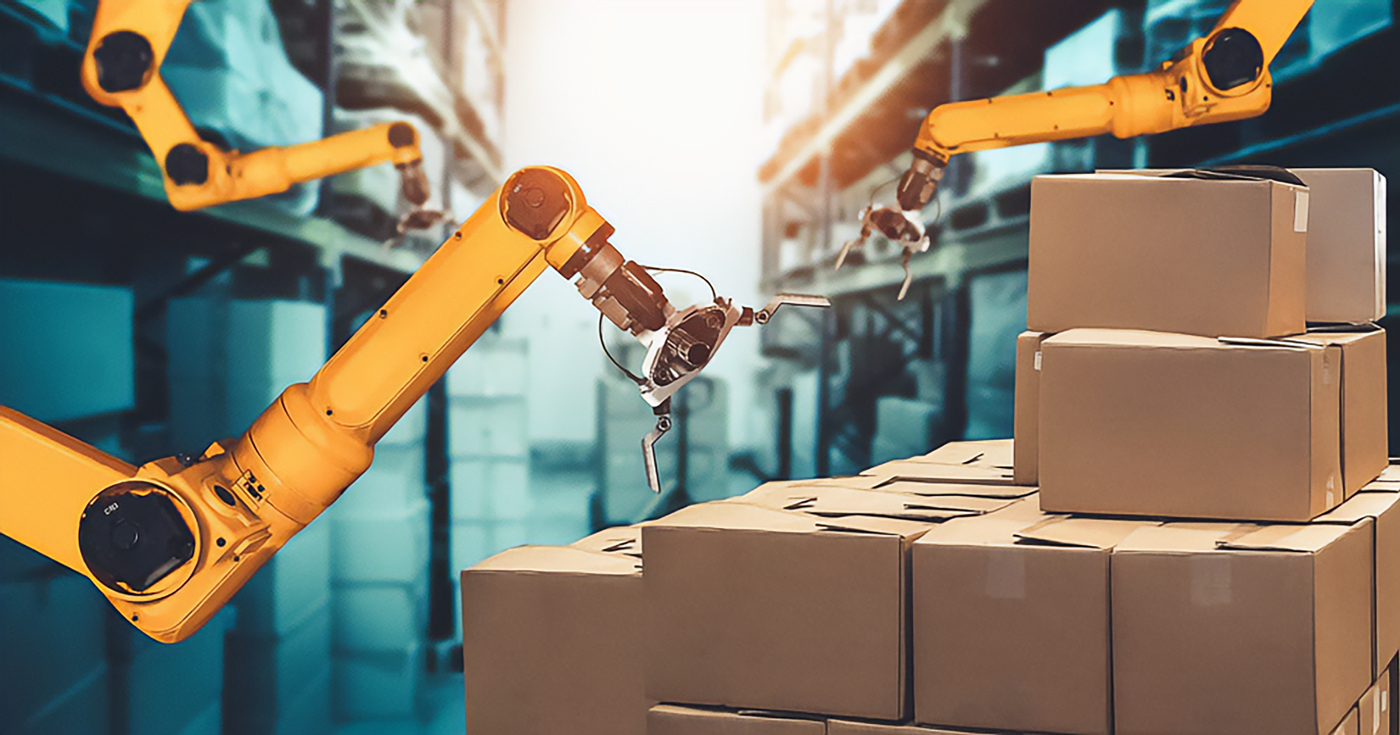Robots to the rescue?
Robots to the rescue?
The global logistics industry serves as the backbone of international trade, but severe labour shortages are threatening to hamper future growth worldwide in this sector. A new generation of AI-enabled robots could, however, help to tackle these challenges.
As demand has skyrocketed, companies have invested heavily in robotics and automation. As the International Federation of Robotics (IFR) points out, sales of professional service robots for the transportation of goods and cargo grew by 44% year-on-year from 2021 to 2022.
“Shortage of truck drivers, warehousing staff, or dockworkers is a critical pressure on supply chain management worldwide,” says Marina Bill, president of the IFR. “By combining automation hardware with smart software, robot manufacturers deliver to the specific needs of the warehouse and logistics industry. AI-equipped robots offer tremendous new opportunities for this sector.”
Handling variability and unpredictability
The main aim of using artificial intelligence in robotics is to better manage variability and unpredictability: logistics providers deal with a varied mass market of cross-border shipping, e-commerce, and last-mile delivery. This environment requires dealing with frequently changing products, orders, and stock. To make machines capable of supporting such flexible workflows, AI software runs by experience, rather than programming.
These AI-equipped robots learn to pick and pack different objects at high speed in a warehouse. They use vision to transport items autonomously around the factory and provide AI-driven interfaces that turn a 90-minute maintenance task into a two-second adjustment.
Robot manufacturers are also developing generative AI-driven interfaces which allow users to program robots more intuitively by using natural language instead of code. In other words, workers will no longer need specialised programming skills to select and adjust the robot´s actions.
But what about safety?
Rapid advances in sensors, vision technologies, and smart grippers allow robots to respond in real-time to changes in their environment. This allows them to work safely alongside human workers.
Collaborative robot applications offer a new tool to relieve and support human workers. They can assist with tasks that require heavy lifting or repetitive motions, and can work in dangerous environments.


Unbelievable truck driver shortages
For many logistics companies, the time to further automate is now. The worldwide shortage of truck drivers is one of many reasons: according to the International Road Transport Union (IRU), there are currently over three million truck driver positions to be filled worldwide. With the huge demographic gap between young and old drivers growing, driver shortages are forecast to double by 2028.
While the overall challenge of labour shortage is common across the logistical supply chain in Europe, Asia, and the US, its severity and specific causes differ. In Japan, for example, new governmental worktime regulations are forcing companies to further automate.
“The government´s overtime cap is an important step to improve working conditions for employees,” says Takayuki Ito, vice president of the IFR. “Industrial and service robots deliver great solutions to automate.”
In Japan, recent average annual working hours for a heavy truck driver were 2,568 – 444 hours longer than the national average for all jobs – according to labour ministry data from 2022. Placing cargo in and out of trucks and warehouses is one of the most time-consuming tasks for truck drivers.
Freeing up truck drivers from loading and unloading cargo could save them up to 25% of working time during a day´s shift, the IFR points out. Robots also help reduce errors in order fulfillment by automating repetitive tasks such as picking and packing.
“Regulations of overtime work and the demographic change will require the adoption of automation technology in many branches of the Japanese economy,” says Ito. “The challenges of the trucking industry are good examples to show how robotics and automation deliver adequate solutions for our workplaces of the future.”
Bill further notes that robotics technology is a fit for various tasks within the logistics industry. “While service robots work alongside human personnel creating more efficient workplaces, industrial robots help to automate dirty, dull, and dangerous tasks behind fences,” she says. “The combined power of a wide range of applications in robotics and automation will play a crucial role in addressing workforce gaps and allow future growth in this key industry.”
Published by
Jaco de Klerk
focusmagsa




